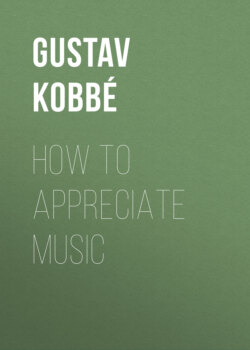Читать книгу How to Appreciate Music - Gustav Kobbé - Страница 13
На сайте Литреса книга снята с продажи.
Piano and Forte.
ОглавлениеNeither on the clavichord nor on the harpsichord could the player vary the strength of the tone which he produced, by the degree of force with which he struck the keys. Swells and pedals worked by the knees and 44 the feet were devised to overcome this difficulty, but “touch” as we understand it to-day was impossible with the instruments in which the degree of sound to be produced was not under the control of the player’s fingers. The clavichord was piano, the harpsichord was forte. Not until the invention of the hammer action, the substitution of hammers for tangents and quill-jacks, was an instrument possible in which whether the tone should be piano or forte depended upon the degree of strength with which the player struck the keys. This instrument was the first pianoforte. It was invented and so named in 1711 by Bartolomeo Cristofori, of Florence, and, although nearly two centuries have elapsed since then, the action used by many pianoforte manufacturers of to-day is in its essentials the same as that devised by this clever Italian. The invention frequently is ascribed to Gottfried Silbermann, a German (1683–1753). But the real situation is that Cristofori was the inventor, while Silbermann was the first successful manufacturer of the new instruments, from a business point of view. Time and improvements were required before they made their way, and how slow many professional musicians were in giving up the beloved clavichord for the pianoforte already has been pointed out. But the latter was bound to triumph in the end.
I shall not attempt to give a technical description of the mechanism of the pianoforte. But I should like to answer a few questions which may have suggested themselves to players who may not have cared to take their instruments apart and examine them, or have not been present when their tuners have taken off the 45 lid and exposed the strings and mechanism to view. The strings of the pianoforte are of steel wire, and their tension varies from twelve tons to nearly twenty. Those of the deepest bass are covered with copper wire. Eight or ten tones of the bass are produced by the vibration of these copper-wound strings. Above these, for about an octave and a half, the strings are in pairs, so that, the hammer striking them, there are two unison strings to a tone, simultaneously, and producing approximately twice as powerful a tone as if only one string had been set in vibration. The five remaining octaves have three strings to a tone.
